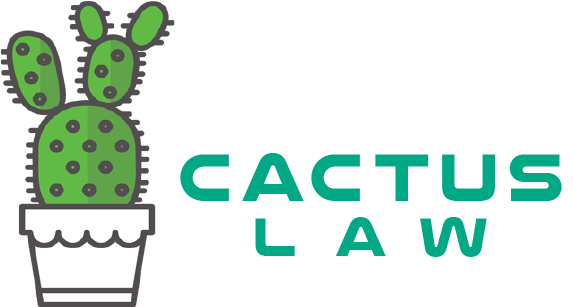Certificate of Pending Litigation (CPL)
A Certificate of Pending Litigation (CPL for short) is an encumbrance on title often registered by an party with an interest to warn the public that the property is subject to litigation. Registering a CPL should have the effect of preventing all dealings with the property (sale, mortgage, financing, etc.) while the litigation is pending. Once the dispute is resolved, the CPL can then be discharged from the property. When determining whether to grant a CPL, a court will first determine: 1) If there is a triable issue affecting an interest to the property. If this threshold is met, then 2) The court will consider if granting a CPL is an equitable relief based on a number of factors, including, but not limited to: Whether the plaintiff is a shell corporation; Whether the land is unique; The intent of the parties in acquiring the land; Whether there is an alternative claim for damages; The ease or difficulty in calculating damages; Whether damages would be a satisfactory remedy; The presence or absence of a willing purchaser; The harm to each party if the CPL is or is not removed with or without security; Whether the interests of the party seeking the CPL can be adequately protected by another form of security; and Whether the moving party has prosecuted the proceeding with reasonable diligence. Two recent decisions from the Ontario Superior Court have reaffirmed the above-mentioned factors a court will consider when determining if a court order for a CPL will be granted. Pacione v. Pacione, 2019 ONSC 813 In Pacione v. Pacione, 2019 ONSC 813, Robert Pacione loaned $250,000 to his brother, Mario Pacione, pursuant to a promissory note signed by the both of them. The note stated that the loan must be repaid by Mario within 90 days. If Mario didn’t repay the loan within that time, the note stipulated that Mario would authorize a third mortgage against the property in dispute. The note further stated that the property was owned by a numbered corporation, where Mario purportedly acted as the sole principal. Mario did not pay back the loan and no mortgage was placed on the property because it turned out that Mario was not a director or officer of the corporation the time that the promissory note was executed. Using the test above, Justice Conlan observed that the test for a CPL was most certainly met in this case. The note had established that Robert had a reasonable claim to an interest in the property. The fact that Robert had also requested monetary damages was no bar to the success of the motion for the CPL because otherwise no mortgage holder who sues the debtor could ever obtain a CPL. The Court also recognized that any prejudice to Mario had to surrender to the very significant prejudice to Robert if the CPL was not registered (which would likely mean he would lose $250,000). Notably, the court also stated that while Mario had no legal authority to bind the corporation company and the property in question, this fact did not defeat Robert’s interest in the property, as there was […]
Read moreDefamation Laws in Canada
Defamation is a tort action in which the plaintiff claims that its reputation has been harmed. The defendant is accused of “defaming” the plaintiff by spreading incorrect information. In layman’s terms, the plaintiff claims that the defendant injured their reputation by spreading falsehoods about them. Defamation law strives to protect a person’s reputation, which is intrinsically tied to his or her human dignity. However, a variety of defenses have evolved to preserve other essential principles, such as freedom of expression and press. Who Has the Right to Sue and Can be Sued? Plaintiffs A defamation action is a personal action. Only someone who feels they have been defamed may file a lawsuit. A plaintiff must be able to plausibly assert that their reputation has been harmed for the claim to be successful. Plaintiffs in a defamation action may include: Any living individual can be a plaintiff in a defamation case. Unlike in some other nations, public people in Canada can sue for defamation. Legal entities, such as corporations. For example, instances such as where plaintiffs have been non-profit corporations that owned a senior’s residence home. The following are not admissible in a defamation claim: A deceased person’s estate. The law of defamation only applies to live people’s reputations. Governments accusing private individuals of slander. This is related to the promise of free expression. Of course, no plaintiff will prevail until all elements of the cause of action are proven. Defendants When it comes to who might potentially be held responsible for defamation, the law throws a broad net. Anyone who “publishes” defamatory material can be sued. When defamation is repeated, the original author may be held responsible if: They approved it; or The republication is a natural and expected outcome of the initial publication. Multiple Defendants’ Liability Defendants in defamation cases should be aware that even if they had a tiny role in the sequence of events, they may bear entire responsibility for the defamation. For example, in Botiuk, the lawyers who signed the Lawyers’ Declaration were jointly and severally liable for the full extent of damage caused by other statements made by the primary defendant because they did not limit the use of the declaration. Similarly, under the concepts of concerted action liability, numerous defendants might be found responsible. Secondary defendants should be cautious when a tort, like as defamation, is committed in pursuit of a shared intent or plan to do injury to the plaintiff. All who committed any of the following can be held equally liable with a major offender (for example, the author of the defamatory statements): Actively participated. Aided it via cooperation or request. Assisting or encouraging the principal offender. Approved and embraced the wrongdoer’s actions for their own gain. Defamation Elements: Dissecting the Cause of Action To prevail in a defamation suit, whether for libel or slander, the plaintiff must show: That the statements in dispute are defamatory. That the plaintiff was alluded to by the terms. That the statements were spoken to at least one person other than the plaintiff. If the plaintiff can establish these three factors, falsehood and harm are […]
Read moreIntentional Interference In Contractual Relations Vs. Economic Relations
If a third party interfered with your ability to conduct business, you may have a cause of action against the third party under the tort of intentional interference in contractual relations, or the tort of intentional interference in economic relations. While both the torts are intentional torts, Canadian courts have attempted to distinguish between the two. What Is the Tort of Intentional Interference with Contractual Relations? When one party, without legal justification, inhibits another party from completing their contractual responsibilities with a third party, the tort of intentional interference with contractual relations can be established. This could happen, for example, if a supplier deliberately acts to prevent a distribution company from satisfying its contractual responsibilities to deliver items to a retailer with whom they have a contract. The plaintiff must show the following to prove the tort of interference with contractual relations: There was a contract between the plaintiff and a third party; the defendant was aware of the contract; the defendant’s conduct hindered contract fulfillment; the defendant acted with the intent to interfere with the contract; and the plaintiff suffered damages as a result. While it is clear that the defendant’s primary intention must be to interfere with the plaintiff’s contractual connections with another party, provincial courts have differed in their interpretation of the required intention to establish the tort. The Ontario Court of Appeal concluded that it is insufficient for a violation to be a foreseen result of the defendant’s actions[1], however the Manitoba Queens Bench determined that recklessness as to contractual interference satisfies the requirement of intent[2]. The intentional act, however, does not have to be malicious or unlawful. What Is the Tort of Intentional Interference with Economic Relations? The tort of Intentional interference with economic relations is defined as the “intentional infliction of economic injury on the plaintiff by the defendant’s employment of unlawful measures against a third party”.[3] The tort of intentional interference with economic relations has three components: The defendant must have interfered with the plaintiff’s economic interests; the interference must have been illegal; and the plaintiff must have suffered economic harm as a result of the interference. AI Enterprises Ltd v Bram Enterprises Ltd, an unanimous Supreme Court of Canada decision, clarified that “unlawful means” refers to the defendant’s activities that might give rise to a civil claim by a third party against the defendant[4]. As a result, “unlawful means” refers to the civil damage done to a third party rather than the criminality of an action. The plaintiffs in AI Enterprises sued a joint owner who was jeopardizing the sale of a property to a third party. The tort was not established, according to the court, because the injury done to the third-party purchaser was not actionable. The tort, however, was established in Grand Financial Management Inc v Solemio Transportation Inc, where the court found that Grand Financial jeopardized the plaintiff’s business by illegitimately obtaining security interests owned by a third party[5]. If you have any questions about potential breaches of contract or intentional interference claims, contact Cactus Law today to speak with a civil litigation lawyer. Disclaimer: The information presented […]
Read moreCorporate Law
Are you a shareholder or other interested party unfairly prejudiced by the conduct of a corporation? You may have the right to bring a court action against the corporation under section 241 of the Canada Business Corporation Act. A complainant may be able to bring a court action with the goal to limit a director’s oppressive actions. Such actions can include issuing shares to turn a majority shareholder into a minority shareholder; providing dividends or payments to some shareholders and not others; or otherwise acting to the benefit of some shareholders and the detriment of others. Contact us to learn more about the legal remedies available to you.
Read moreTrademark Opposition
If you have not successfully registered your trademark, your intellectual property may be at the risk of being registered by another person. A complainant has two months from the date of publication in the trademarks journal to oppose the registration of a trademark. Contact us for more information on how you can protect your intellectual property.
Read more


